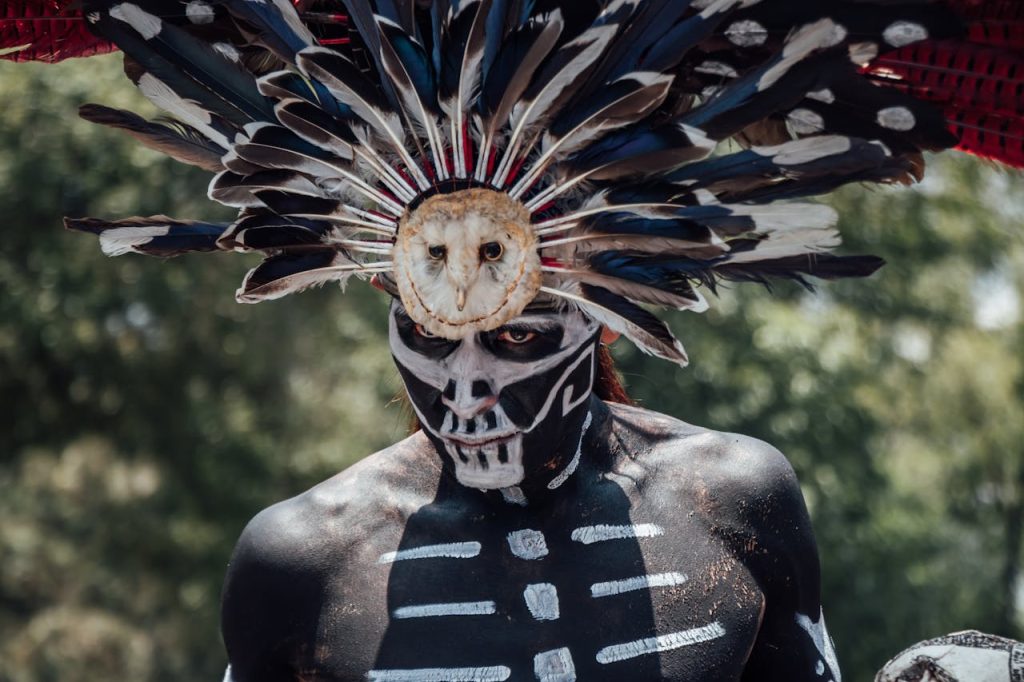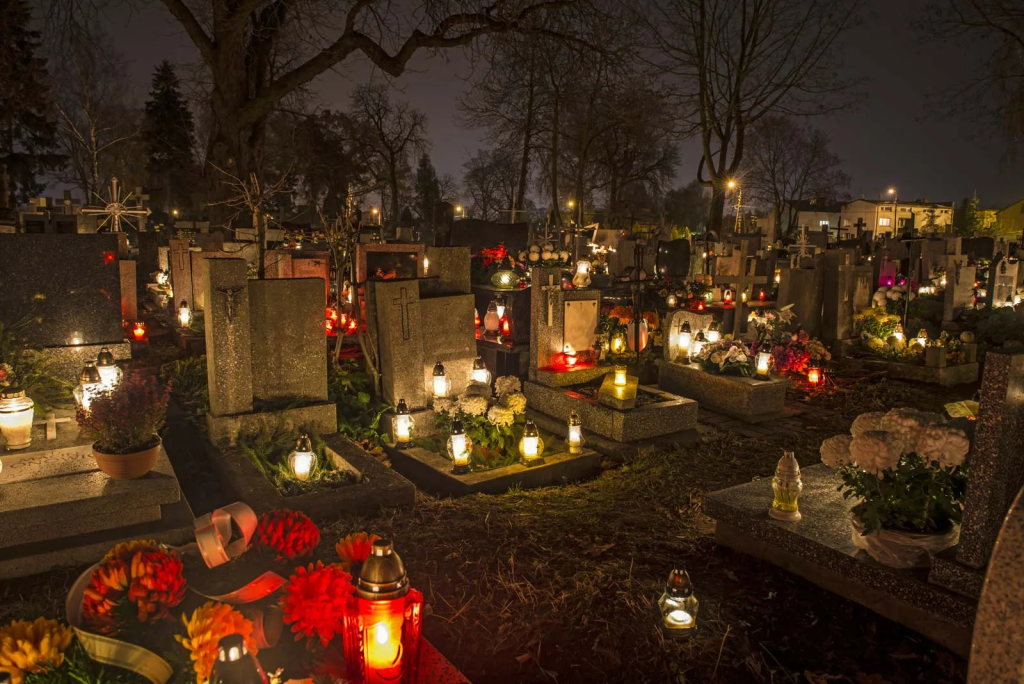- Dia de los Muertos
Día de los Muertos, or Day of the Dead, is a vibrant Mexican holiday celebrated mainly on November 1 and 2, honoring the lives of deceased loved ones with joy, reflection, and community festivities. It blends Indigenous beliefs with Catholic traditions tied to All Saints’ and All Souls’ Days and is now widely observed in Mexico as well as by Mexican heritage communities elsewhere.

Observances
Families build colorful altars, called ofrendas, at home or gravesites, decorated with marigolds (cempasúchil), candles, photos, favorite foods, and mementos of the departed to guide their spirits back for a visit.
November 1st (Día de los Angelitos) focuses on children who have died, while November 2nd (Día de los Muertos) honors deceased adults.
Special foods such as pan de muerto (sweet egg bread), sugar skulls, tamales, and traditional drinks are prepared and shared with both the living and spirits.
Celebrations often include visiting cemeteries to clean and decorate graves, lighting candles, playing music, sharing memories, and sometimes staying all night with departed loved ones.
People dress up in skeleton motifs and paint their faces as calaveras (skulls), particularly inspired by the iconic figure of La Catrina, and participate in festive parades and public gatherings.
The mood is joyous, focusing on remembrance, humor, and the cyclical nature of life and death; skeleton figurines are posed having fun to emphasize that death is a continuation, not an end.
The holiday is marked by public displays, processions, music, and dance in cities and towns, with events often open to the wider community.
Ofrendas can be found in public spaces like schools and museums, and participation by non-Mexican communities continues to grow
Symbolism
Marigolds (cempasúchil) are believed to attract spirits with their vibrant color and scent.
Sugar skulls (calaveras) bearing the names of both living and dead are exchanged and placed on ofrendas as a playful symbol of remembrance.
Papel picado (colorful perforated paper), candles, and personal tokens further adorn altars and homes.
Día de los Muertos serves as a time to remember, celebrate, and maintain connections with ancestors, blending reverence with festivity and artistic expression.
- All Souls Day
All Souls Day, observed on November 2, is a major Christian tradition—especially in Catholic communities—dedicated to praying for and remembering the souls of the departed, particularly those believed to be in purgatory. Its core themes are remembrance, hope, and intercessory prayer for the dead within the larger context of the Allhallowtide triduum, which also includes Halloween and All Saints Day.

Observances
Catholics attend special Masses called requiem Masses, wearing vestments in black, violet, or white to symbolize mourning, penance, and hope.
Prayers are offered for the “faithful departed,” with the famous All Souls Day prayer: “Eternal rest grant unto them, O Lord, and let perpetual light shine upon them…”.
Parishioners write names of deceased loved ones in a “Book of the Dead” or “Book of Remembrance,” so those souls may be remembered throughout November.
Many families visit cemeteries to tend to and decorate graves with flowers (especially chrysanthemums), candles, and sometimes photos or mementos.
Lighting candles at gravesites or in windows is a widespread symbol of hope and remembrance for departed souls.
Some regions retain ancient traditions like “souling”—going door-to-door for soul cakes in exchange for prayers for the dead, a practice considered a forerunner to modern trick-or-treating.
While most notably marked by Catholics, many Anglican, Lutheran, and Methodist churches also commemorate All Souls Day with prayer services and community graveyard cleanings.
In the Eastern Orthodox Church, “All Souls Saturday” is observed on the Saturday before Pentecost.
The day is often ecumenical, with Christians of many backgrounds cooperating in caring for graves and honoring the dead.
